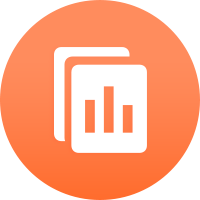
2025-07-28 05:29
IndustryFrom pip counting to AI measuring probability dist
#CommunityAMA
Traditional Forex trading was long dominated by pip counting—a meticulous process of tracking small price movements to capture incremental gains. This method relied on identifying tight entry and exit points, often with fixed stop-losses and take-profits, grounded in chart patterns or price action cues. While it offered a sense of control and clarity, pip counting treated each movement in isolation, lacking broader statistical context. Traders using this method typically ignored the underlying distribution of outcomes and assumed market behavior was more deterministic than it truly is.
AI-driven trading has upended this narrow focus by shifting attention from individual pips to entire probability distributions. Instead of treating each trade as a binary win or loss, AI models evaluate a continuum of potential outcomes based on current market conditions, volatility structures, macroeconomic signals, and behavioral inputs. This probabilistic framework allows AI systems to assign confidence levels to different scenarios, such as breakout likelihoods, retracement depths, or trend continuation odds. Rather than reacting to each pip tick, AI assesses the shape and skew of the distribution, adapting strategies based on how likely various price paths are.
For instance, a currency pair may show similar pip movement patterns on two different days, but AI might recognize that the probability of a sharp reversal is 80% on one day and just 20% on another—information invisible to a pip-focused approach. By embracing uncertainty and working within probabilistic envelopes, AI enables more nuanced position sizing, smarter hedging, and context-aware exits. This transition represents a fundamental evolution in Forex trading, where success is no longer about counting isolated movements, but about interpreting the market as a dynamic probability space. As AI continues to refine these distributions in real time, pip counting becomes not just outdated, but dangerously simplistic.
Like 0
Wilsan
Trader
Hot content
Industry
Event-A comment a day,Keep rewards worthy up to$27
Industry
Nigeria Event Giveaway-Win₦5000 Mobilephone Credit
Industry
Nigeria Event Giveaway-Win ₦2500 MobilePhoneCredit
Industry
South Africa Event-Come&Win 240ZAR Phone Credit
Industry
Nigeria Event-Discuss Forex&Win2500NGN PhoneCredit
Industry
[Nigeria Event]Discuss&win 2500 Naira Phone Credit
Forum category

Platform

Exhibition

Agent

Recruitment

EA

Industry

Market

Index
From pip counting to AI measuring probability dist
 Malaysia | 2025-07-28 05:29
Malaysia | 2025-07-28 05:29#CommunityAMA
Traditional Forex trading was long dominated by pip counting—a meticulous process of tracking small price movements to capture incremental gains. This method relied on identifying tight entry and exit points, often with fixed stop-losses and take-profits, grounded in chart patterns or price action cues. While it offered a sense of control and clarity, pip counting treated each movement in isolation, lacking broader statistical context. Traders using this method typically ignored the underlying distribution of outcomes and assumed market behavior was more deterministic than it truly is.
AI-driven trading has upended this narrow focus by shifting attention from individual pips to entire probability distributions. Instead of treating each trade as a binary win or loss, AI models evaluate a continuum of potential outcomes based on current market conditions, volatility structures, macroeconomic signals, and behavioral inputs. This probabilistic framework allows AI systems to assign confidence levels to different scenarios, such as breakout likelihoods, retracement depths, or trend continuation odds. Rather than reacting to each pip tick, AI assesses the shape and skew of the distribution, adapting strategies based on how likely various price paths are.
For instance, a currency pair may show similar pip movement patterns on two different days, but AI might recognize that the probability of a sharp reversal is 80% on one day and just 20% on another—information invisible to a pip-focused approach. By embracing uncertainty and working within probabilistic envelopes, AI enables more nuanced position sizing, smarter hedging, and context-aware exits. This transition represents a fundamental evolution in Forex trading, where success is no longer about counting isolated movements, but about interpreting the market as a dynamic probability space. As AI continues to refine these distributions in real time, pip counting becomes not just outdated, but dangerously simplistic.
Like 0
I want to comment, too
Submit
0Comments

There is no comment yet. Make the first one.

Submit
There is no comment yet. Make the first one.